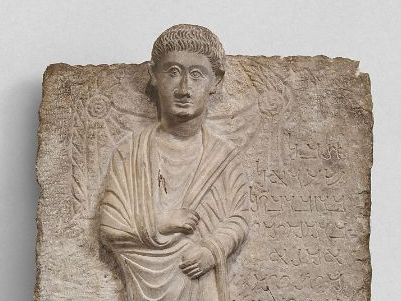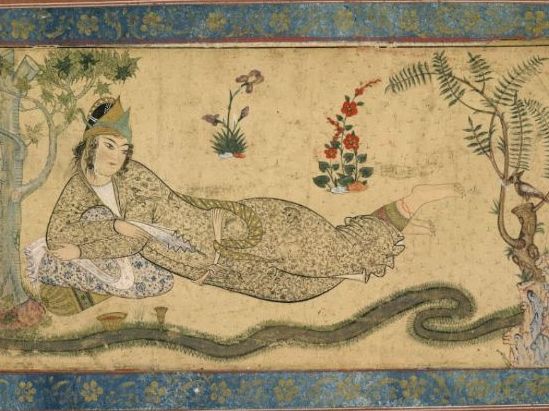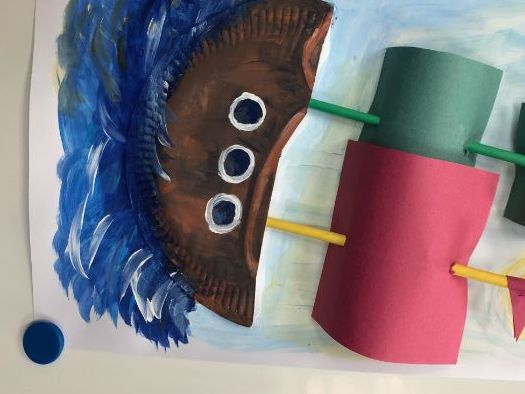22Uploads
3k+Views
355Downloads
All resources

Technical Drawing - Mastering Sketching & Shading: From 2D to 3D
This downloadable PowerPoint lesson is perfect for guiding students through the fundamentals of technical and creative sketching. Designed for art and design classrooms, it blends precision with artistry, helping students build strong drawing foundations.
By the end of the lessons, your students will be able to:
Bisect lines and angles accurately.
Enhance two-dimensional sketches using a variety of techniques.
Create three-dimensional sketches using crating methods.
Use isometric grid paper as a tool for sketching forms.
Draw cylindrical objects with correct perspective.
Apply light and shading to bring sketches to life.
Add shadow and tonal values to enhance depth and realism.
This resource is ideal for introducing perspective drawing, product design sketches, or technical art skills, with ready-to-teach slides and clear visual examples.

Pixel Power: Fun Grid Drawing Activities for the Art Room
These ready-to-print activity sheets are perfect for introducing proportion, observation, and colour blending through pixel-inspired grid drawing. Ideal for a cover lesson, warm-up activity, or a creative break, these sheets require minimal prep but deliver maximum engagement.
Whatâs Included:
Activity 1: Complete the grid drawing of a Minecraft character using a 10 mm square grid.
Activity 2: Complete the grid drawing of the iconic Mario character on a 10 mm square grid.
Activity 3: Complete the grid drawing of a symbol using a 10 mm square grid.
How to Use:
Print the activity sheets for students.
Provide pencil crayons or coloured pencils for finishing touches.
Encourage students to focus on accuracy, colour choice, and clean grid work.
Perfect for KS3 Art & Design or any class exploring digital-to-traditional art connections!

Moving Masterpieces: Exploring Dynamic Art with Alexander Calder
Bring kinetic art to life in your classroom with this engaging 4-period lesson plan for Year 9 / Grade 8 students. This resource invites students to step into the world of Alexander Calder, the pioneer of mobiles and kinetic sculptures.
Whatâs Inside:
Students begin with prior research, creating a short PowerPoint about Calderâs life and work.
A hands-on, creative lesson plan exploring Calderâs process, focusing on balance, movement, and composition.
A guided task to design and build a three-level mobile inspired by the theme of flight.
Materials Needed:
String, sticks, and a selection of collage or recycled materials.
This resource is perfect for sculpture projects, 3D design units, or art lessons exploring movement and form. Itâs ready to teach and guaranteed to inspire creativity.

Architectural - Technical Drawing - Bubble diagram & Floor plan
Lesson material used for a class with Year 9 (KS3).
This term, we were looking at Architectural, technical drawing. In this lesson, we looked at Bubble diagrams and Floor plans.
The PowerPoint attached is for a 45 min lesson including activities, keywords and examples.

Architecture project: The Tiny-House
Architecture project: The Tiny-House
Design Brief
The tiny house movement (also known as the âsmall-house movementâ) is an architectural and social movement that advocates living simply in small homes. One definition of a tiny house is a dwelling unit with a maximum of 37 square meters (400 sq ft) of floor area, excluding lofts. There are a variety of reasons for living in a tiny house. Many people who enter this lifestyle rethink what they value in life and decide to put more effort into strengthening their communities, healing the environment, spending time with their families, or saving money. Tiny Homes can also provide affordable transitional housing for those who have experienced a lack of shelter.
A family living in the _____ has decided to go to a leading architecture company in the _____ and ask you to design a 3D model of their dream tiny house. As the lead architect, it is up to you to win your client over and create a successful project.

Future Visions: Create a Cyberpunk Cityscape Inspired by Futurism
Step into the world of Futurism and Cyberpunk with this immersive art lesson designed to spark creativity and critical thinking. Students will explore the bold, dynamic world of a Futurist artist, analyzing their style and discovering how their ideas continue to influence modern visual culture, including iconic films like Blade Runner.
What Students Will Do:
Learn about a Futurist Artist and study their unique approach to movement, speed, and modernity.
Watch a video clip from Blade Runner to see how Futurismâs influence is still alive today.
Create a striking Futurist-inspired cityscape, blending themes of Cyberpunk, dystopia, and modern architecture.
Use pastels on black paper to achieve vivid contrasts and futuristic atmospheres.
Whatâs Included in the Download:
A PowerPoint presentation packed with visuals, artist information, and step-by-step instructions.
A video clip to inspire students and spark discussion.
This lesson is perfect for exploring modern art movements, concept art, or urban landscapes in a fresh and exciting way.

Speed & Motion: Dynamic Art Inspired by Giacomo Balla
Bring the excitement of Futurism and movement into your classroom with this two-period lesson plan designed for Year 9 / Grade 8 students.
Students will dive into the world of Giacomo Balla, exploring how he captured energy, speed, and motion in his iconic works. Before this lesson, students research Balla and create a short presentation on his art. Now, theyâll take that knowledge further with a hands-on activity to create their own Balla-inspired dynamic artwork.
Whatâs Included:
A ready-to-use lesson plan exploring Ballaâs process, focusing on rhythm, repetition, and motion in art.
Clear task steps for creating a dynamic drawing or pastel artwork that mirrors Ballaâs vibrant energy.
Extension ideas for fast finishers or more advanced students.
Materials Needed:
Pencils, black pens, and pastels (or coloured chalks).
This resource is perfect for introducing Futurism, motion in art, or experimental mark-making, and itâs guaranteed to get students thinking about how to represent energy and movement in creative ways.

Line Relief Pottery Lesson
For this pottery project, you will create your own raised design.
A raised design in an artwork is called a âReliefâ.
You will be using a Styrofoam plate for this project.
This ceramic lesson can be taught to all of Secondary.
This could be a 3 one-hour lesson:
Create your design and Styrofoam plate - the theme could be a pattern or link to another art task.
Build your pot and use the Styrofoam plate
Paint your final design with Watercolours or Acrylics.
Tips:
Try and limit the use of water in stage 2.
Press hard on the Styroplate to capture the design; it doesnât matter if the Styrofoam plate breaks.
If you use air-dry clay, Acrylics might work better than Watercolours, as the water could ruin the pot.
Have fun!

Egyptian Textiles Fashion
Exploring Egyptian Textiles topic.
Mini lesson (30 mins) with a:
Information & Pictures
Quiz
Design a Tunic exercise
Including visual handouts.

Technical Drawing - Pictorial
Description:
Define pictorial drawing.
Identify the different types of pictorial drawings.
Define an oblique view.
Draw an oblique view of a 3D solid.
Complete oblique drawings.
Define an isometric view.
Draw an isometric view of a 3D solid.
Complete isometric drawings.
Define a perspective view.
Draw a perspective view of a 3D solid.
You will need pencils, erasers, rulers and graph paper.
The whole lesson is in the PowerPoint, including different drawing tasks.

Propaganda Art - Forests are Golden
Forests are Gold is from a Vietnam
propaganda poster painted in 1977 by
artist Lê Thiá»p, who studied at the TrÆ°á»ng
Äại Há»c Mỹ Thuáºt [College of Fine Arts] in
Hanoi.
This is one lesson look at Propaganda Art not related to War but to the Environment.
Includes an activity at the end.
This is a lower secondary visual art task.

Art History: The Ancient City of Palmyra
Mini 35 mins Art History lesson.
This is a pdf of a student-led lesson including content, quiz and drawing task. Iâve also included imagery for the drawing task.

Art History: Queen of Sheba
Mini 35 mins lesson about Islamic Art History.
Attached is a PDF for a student-led lesson. Included is the story, quiz and a drawing task.

Fernand Leger: Drawing and Painting task
A slideshow lesson in Powerpoint introducting Fernand Leger to your class, includes an activity.
A lesson for two periods.
Years 7, 8, 9

Maria Sibylla Merian: Scientific Illustration
Powerpoint lesson, learning objectives are:
Understand the history of scientific illustrations.
Introduce you to Maria Sibylla Merian.
Look at Mariaâs scientific illustrations.
Be a Scientific Illustrator
Include the lifecycles of different animals and plants.

Make a 3D Pirate or a Old Sailing ship
You will get A3 instructions ready to hand out to your students.
A4 finished examples.
Powerpoint with learning objectives.
Suitable for Year 7, 6 & 5

Surreal Edible Architecture
Learning Aims: By the end of the lesson, learners will be able to Understand what Surreal Edible Architecture looks like.
In this download you are provided a lesson plan for maybe 2/3 lessons for Middle School based on food.
You will be provided a list and instructions on how the lesson should flow. Enjoy!

2 x Electrical Parts Game: Match the keyword to the description
Print out the PDF and cut up the rectangles. Keep one version uncut for reference.
In groups match the keywords to the description.
This is a good starter or end activity for class.

Oswaldo âGuayasamih Art Installation Lesson
Learning Question:
Who is Oswaldo Guayasamih and how do I create a response to his work?
Materials:
Cardboard
Paint
Black Markers

Kimmy Cantrell Ceramic Lesson for Middle School
Learning Objectives:
Who is Kimmy Cantrell and what is the slab clay technique?
How do I use the slab clay technique to create an abstract portrait inspired by Kimmy Cantrell?
Can I use mark-making and painting skills to add colour and pattern to my sculpture?
The download is a Powerpoint.




















